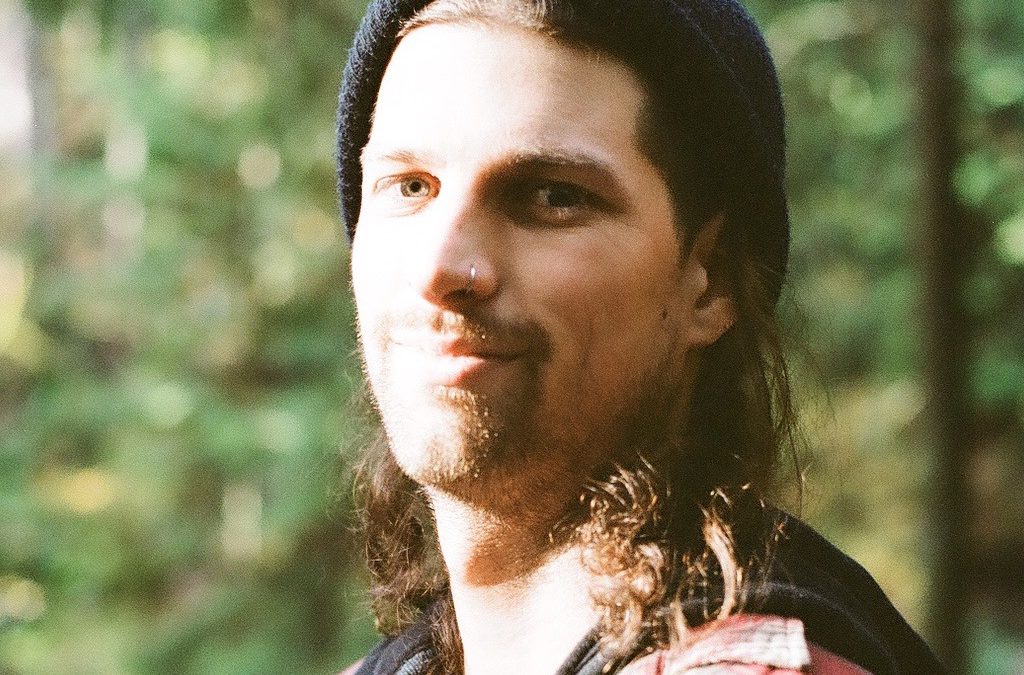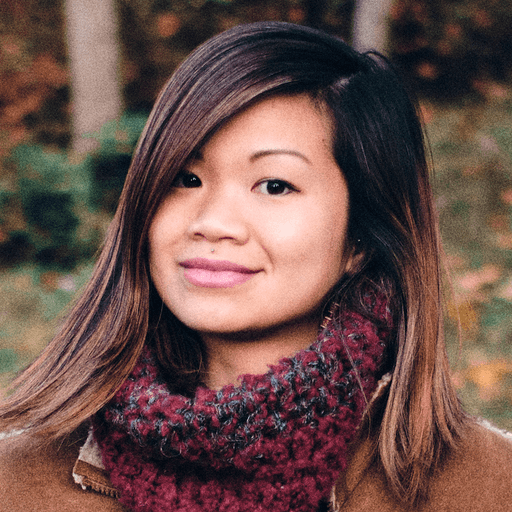Jason Mannings is a talented award-winning filmmaker who creates beautiful documentary and narrative content. As part of our Films From Home (while stuck at home): Kootenay Shorts Program streaming on April 24 and 27th in celebration of National Canadian Film Day (on the 22nd), we’ll be streaming Jason’s trailer for his upcoming short entitled ‘Hwuy’xwet Pune’luxutth, Opening Penelakut’. The film is about the First Nation’s student body at Penelakut Island Elementary School, their teachers, the surrounding elders and band and one mountain bike trail builder who all help the students in various ways to build and honour these trails behind their school. Here are 12 questions with the filmmaker.
1. The children in this film seem inherently aware of the gifts of nature that surround them. How did filming in this location affect your energy during the shoot?
It of course varies from kid to kid, but from my vantage, it seemed like Penelakut Island is really home to a lot of the kids, in a deep sense, and certainly the land plays a role in that. The feeling I got was that, for the most part, it was really fun for the kids to spend time in the forest during school hours (and afterwards). It’s not like we live in a world where everyone gets out into nature all the time, even if it’s in our backyard, so a little push to get out there is always good. It’s worth noting that up until somewhat recently, there was a residential school on Penelakut, during which time the island was called Kuper Island… it’s colonized name. Thankfully the island has a traditional name again, and no more Catholic school. From what I’ve heard, during the 100 years or so of that residential school, the school wasn’t exactly encouraging students to connect with the land . There was a lot of discipline, abuse, and religion. A lot of the community is old enough to remember this era clearly, so of course the elders are going to enjoy seeing the children out in the forest. To answer the question, I personally felt at home in the woods; not in the sense that it was my home, but simply that I feel at home in nature, and in the forest. I’m more of an inland temperate rainforest kinda person, but I’ve grown to love BC’s coastal temperate rainforests. I actually started building mountain bike trails when I was around 12-years-old, and while I didn’t get to do it during school hours, I would go after school, and even at lunchtime. The woodland energy was good.
2. What does Hwuy’xwet Pune’luxutth mean?
Hwuy’xwet Pune’luxutth means, simply, “Opening Penelakut”. I think the final title of the film will include that translation, although it makes for a somewhat long and clunky title. I’ve felt slightly concerned about no one being able to spell or pronounce the film name, since I’d love for people to share it… and be able to find it. But maybe people will refer to it as simply Opening Penelakut. The film initially had a different title, but after some back and forth with the community, it was clear it would mean a lot to have a more traditional Hul̓q̓umín̓um̓ title that included the word “hwuy’xwet”… to expose people to that language. And to be honest, even though I can barely pronounce the title, it really does feel right, and I think that’s such an important thing. The title itself may well be self-explanatory, but if it’s not: some of the island community feels that the kids building the new trails is helping to “open” the island and the community. That will, of course, be explored in the film.

3. Was it fun to work with children? Especially those so wise for their years?
It’s often fun to work with kids, usually chaotic. Some of the kids were hilarious. I figured we’d be dealing with the reality of children on island time… so as expected most of my “plans” were thrown out the window, and I sort of just went with the flow. It’s funny, I’ve been trying to land and pitch projects that are far more controlled, and this was really anything but. As a white settler documentarian, I feel it’s of the utmost importance to listen to locals, and not be too pushy, when filming or storytelling on a reserve, and with indigenous people. This applies to other cultures as well. But certainly, in Canada there’s a long history of settler journalists and filmmakers arriving in indigenous communities as “guests,” and then trying to force narratives, imagery, and schedules. This tends to cloud the narrative with at best unhelpful, or at worst harmfully inaccurate information. It should go without saying, but it’s of the utmost importance to respect other cultures, even if that means changing plans, or missing deadlines, or not getting what you expected. I’m sure my own approach is flawed in its own ways, but I’m attempting to come from a place of respect, and sensitivity. Between that factor, and working with non-actor children, I needed to be open. The film will of course have some of my artistic imprint on it, but my intent was to listen, to be gentle, and to let go of expectations. To get back to the kids, it was nice to see them connecting with the land, showing some wisdom, and also just being kids. I would hazard to say that the average child, anywhere you look, exhibits more wisdom than the average adult; adults have a way of clouding their intuitive wisdom with culturally informed biases… you know, losing that magic.
4. The film is presented by Raceface. How did this collaboration come about?
RaceFace held a contest to the public last year to pitch films that involved mountain biking but weren’t just shreddits (aka action sports segments). They chose maybe a dozen or so films to support from that contest. So it was an open call-out, basically, an artists grant. I would actually love to see this happen more, it’s something I’ve been quietly lobbying for. Even as a full-time working filmmaker it can still be really hard to fund projects, especially the ones I want to make. It can take a lot of clout, the right relationships, and luck. I also often find that my favorite ideas are usually the ones that get rejected, or never happen. So I think a lot of filmmakers don’t find that project support, whether they are amateurs, emerging talent, professionals, or even famous. In an honest way, I appreciate the support from RaceFace on this film: it has almost no mountain biking in it whatsoever, and I wasn’t having much luck pitching the idea elsewhere. Also, huge thanks to them for being patient. The protocols to get permission and dates from the band, community, and school, took a lot longer than expected. By that time, I had become tied up directing a tv series. So, in the end, it’ll be almost a year behind schedule.

5. In your trailer a teacher talks about the importance of the students being connected to the land, talk about the importance of the land in your own life.
Well, obviously it’s important. I guess as a settler I’ve had complicated feelings about my own relationship to unceded indigenous lands. I’m a 5th generation resident of BC, and my family has been in BC (and Nelson) for maybe 100 years. So I feel pretty connected to the land. And I really can’t imagine what it’d feel like having roots here since time immemorial. I’m fairly sensitive, and love the outdoors, so it’s really all about the land for me. I’ve been attempting to split my time between a slightly more rural life in the Kootenays, and a slightly more urban life on the Coast, but there’s no question I’m a mountain kid. Even when I’m in Vancouver I try to escape to the forest, mountains, or ocean most days… on some level, I’ve structured my lifestyle to accommodate that sort of thing. Honesty though, I just wish we took better care of the land, and didn’t allow so much of it to be held privately, and exploited endlessly. We’re beyond due for some major legislative and cultural changes that prioritize, and value, the health of the land.
6. How has your process changed making this film now that we’re in the midst of a pandemic?
The filmmaking process has changed only slightly, at least so far. It might change more on future films. I definitely can’t do any pickup shots for this film. So I’m working with what I have, which was shot over a few days near the winter solstice. I’m a little distracted during the edit right now; with most projects for 2020 canceled, I’m trying to plan ahead, and pitch new projects that have a better chance of happening in the next year, and during isolation, such that I’ll be able to stay afloat as an artist. Otherwise, I’m just editing in my home office, which is usually how I do it. The film will no longer be premiering in a theatre, and film festivals are probably all canceled. So it’ll be an online launch. I’m not sure where life as a filmmaker will end up after this, but as a freelancer, I never know, so it feels about the same.
7. One of the students talks about how the trail is a way to ‘get away from stress and technology’? What’s one way you do that?
Working as a filmmaker is one of the many careers that, in 2020, involves infinite computer hours. As many as you’re willing to do. Most days I do self-care activities, if I’m not traveling. I try to stretch. I listen to new music, and to a lesser extent, to podcasts. I go for walks, where I usually carry a film camera and take photos of basically nothing. Mostly empty scenes. I attend lots of music events in the city… it’s good to support other artists, and to dance. I read books, on paper… printed books. I regularly splitboard and mountain bike. I like to go to the gym and sauna, at least when that was allowed. But I do find filmmaking involves computers and stress. One of the best things that could come from this pandemic lockdown is everyone coming around to the idea of a universal basic income, so we could all afford to spend more time taking care of ourselves, one another, and the planet. Bringing this back to the film, trail building was a huge part of my youth, and really shaped who I am. I actually met Riley, the “trail boss” in the film, in the woods a long time ago; we were both building bike trails that happened to be close to one another and heard each other’s axes, or chainsaws, or something like that. Albeit Riley went on to build a lot of legendary trails. He’s so good at that. I should probably be building trails instead of making films! But what I want to say is that it’s amazing to see the kids on Penelakut getting offline and into the forest to build trails and bike. It resonates with me, and it’s clearly resonating with them. There’s nothing like laying down a fresh line of loamy single track and shredding it. The kids are immediately feeling the joy of connecting with the outdoors, and that really is THE connection, isn’t it?

8. What if any are recurring themes in your work as a content creator and filmmaker?
That might be a question worth reflecting on. I think a lot of the films I work on are commissions and not necessarily the projects I’m dreaming of making. So the reality of themes in my work is far different than the themes in my mind. Hopefully in 5-years, I can answer this differently — I’m really trying to make more of my own films now. A theme that underlies my work is that common dichotomy of nature and culture: I personally don’t think there should be any separation between the two. More practically speaking, despite originally intending to be a writer and not a filmmaker, my interest in filmmaking is more in the creation of mood and aesthetic — not so much about traditional storytelling. For cinematography, there’s some recurring motifs, which are largely influenced by my own abilities and limitations, as well as by my access to resources (or lack thereof) and by the era we’re living in. Another common theme might be a word that’s been ruined by marketing departments forever, and that’s authenticity. But in my case, I’d say it’s the surreal side of authenticity. I don’t know if that answers the question. Future themes and undertones for upcoming personal work would be some sociopolitical, philosophical, and artistic leanings that already, and will continue to, inform my perspective.
9. What cameras did you use to shoot this and why?
The film is shot on Super8 and RED. I tried to shoot some drone stuff, but I’m just not into what I get from a DJI drone. I had a plan for using a MiniDV camcorder, as well, but I didn’t really have the chance to do what I had planned on that front. I shot RED simply because it’s my personal camera, so its cost-effective and comfortable. I love Super8, and the idea there was to capture a carefree vibe of being a kid on Penelakut. I didn’t quite achieve my vision, but I’m really happy with those cartridges of film, there are some lovely moments. The shooting ratio is so much better on celluloid… I get a rollback from the lab and I’m like “every single second is usable.” Shooting a film with mixed formats, and mixed aspect ratios, has the potential to be distracting, or self-serving, so hopefully, it translates and people enjoy it!
10. Talk about editing this film a little.
Well, I’m still editing it. The hardest part has been that I’ve had a really busy last 6-months with projects and travel, so I’ve been stop-and-start with the editing, which is not ideal. I don’t think traveling or filmmaking should be glamorized in any way, but I was traveling a lot. I also can’t stand the word “busy” but that’s been the case. When I get in the zone with the edit it feels good. It can be like that… the results are usually mediocre until you feel the vibe, and then in like 3-hours you recut everything and make it way better. The edit might feel vaguely avant-garde compared to some documentaries, which is back to that mood thing: I’d rather feel the narrative than literally hear someone say it word for word. I don’t want to say the narrative is obvious, because a lot of people don’t actually see the importance in connecting with the land, but to me, the story is simple and could be summarized in a few words, but the feelings and culture surrounding the story are so much more than that. We’ll see how it works out. I totally ended up shooting different scenes, and a different film, than I originally envisioned, so there’s a bit of that documentary style problem-solving happening in the edit. Originally I intended to follow a few characters really closely, but instead, it’s more of a series of overlapping vignettes.

11. Can you tell us about your process of choosing music for a film?
Creatively speaking, is the vibe right? Does it fit the style and pacing? How well can I chop this up for my needs? Practically speaking, some of the music will be licensed from friends, and some from stock music sites. Thankfully I have some friends who make lovely music, and particularly for this film I’ll be drawing from Michael Red and his record label, Low Indigo, who everyone should check out. And then on the flip I’ll use some tunes from stock music libraries, simply cause some will fit and be easy to licence. It can be a hassle trying to clear tracks otherwise. I also usually end up adding some simple synths, drums, and textures of my own, but I’m not a musician, so I’m limited on how far I can go with that. Next time I make a film like this I may actually commission a composer for a proper score.
12. Thank you so much for your time Jason, when will we be able to watch the finished film?
The film should be out in May or June. It is due soon. It’ll launch on RaceFace’s YouTube. And then hopefully it’ll go on my personal Vimeo at a later date. Otherwise, I’d like to just say thanks to the Penelakut people for welcoming me into their community. Once the film is out we’ll create some sort of a fundraiser to buy bikes, helmets, and tools for more of the kids on the island. There’s still a lot of kids who don’t have, and can’t afford, those important items. I’ll bring that to light once it’s underway. Thanks so much for asking me these questions. I hope everyone reading this can stay creative, empathetic, and healthy this year; maybe make some art, chill in the woods, and try to take care of one another.


